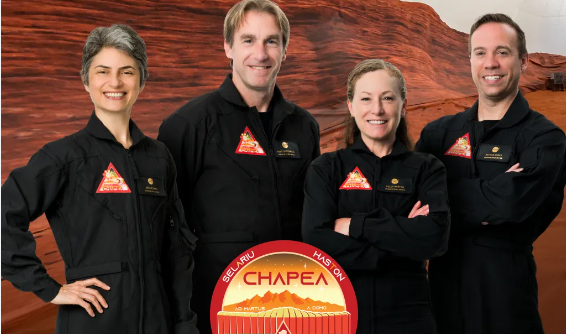NASA’s CHAPEA Project
It is called “Mars Dune Alpha” and is a 1,700-square-foot building made with 3D printing at the Johnson Space Center in Houston, Texas. It has bedrooms, bathrooms, a work area, a robot station, a gym, and a vertical farm, among other things. It is next to a 1,200-square-foot area that is used to simulate events that would happen outside of vehicles on Mars. The setup includes red, rocky cliffs and simulated Martian dirt to make the experience more real.
Mission Objectives and Experiences
The main reason for this long-term engagement was to collect information on the physical and mental effects of a Mars-like environment, such as being alone, having limited resources, and having to wait for messages to arrive. These new ideas are very important for getting astronauts ready for the mental and physical difficulties of longer-term space missions in the future. Crew members did a wide range of jobs, from simulating spacewalks to growing vegetables. They gave NASA useful information about how to keep people healthy in confined and remote environments.
Participants of the Simulation
Professionals from research scientists to doctors were carefully chosen to be part of the CHAPEA project. Each brought a unique set of skills to the task. Kelly Haston, Anca Selariu, Ross Brockwell, and Nathan Jones were on the crew. They were picked through a tough NASA application process that required them to meet strict health, motivational, and professional standards.
Understanding Mars’ Environment
The climate and landscape of Mars are not suitable for living in. Temperatures change quickly, and the atmosphere is mostly made up of carbon dioxide. It has canyons, volcanoes, and huge dust storms in its scenery. These are some of the things that make manned trips hard. Beyond getting people ready for moral problems on Mars, the mission’s results are meant to help us learn more about the planet so that we can figure out if it has been inhabited in the past and what that means for Earth. Following this first CHAPEA trip, more simulations are planned for 2025 and 2026. The ultimate goal is to send people to Mars by the 2030s.
India’s Involvement in Martian Exploration
Along with NASA’s progress, India’s ISRO has shown a lot of interest in Mars with its successful 2014 Mars Orbiter Mission (MOM). As India’s focus on interplanetary study grows, it has plans for more exploratory missions in the future.
Month: Current Affairs - July, 2024
Category: Science & Technology Current Affairs


